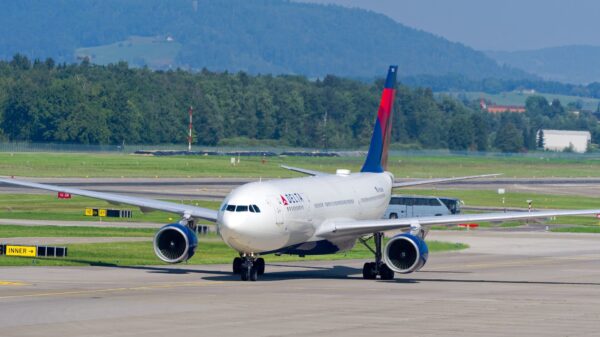The Federal Aviation Administration (FAA) has announced a significant easing of flight reductions at Baltimore-Washington International Marshall Airport (BWI) and other major airports. As of Saturday, flight reductions will decrease from 6% to 3%, signaling recovery in air traffic controller staffing levels.
In a statement released on Friday, U.S. Transportation Secretary Sean Duffy and FAA Administrator Bryan Bedford noted that the decision is a result of improved staffing conditions and a decline in incidents requiring staffing adjustments across the National Airspace System. The FAA indicated that this positive trend allows for a more normal operation of flights at 40 high-traffic airports, including BWI, Ronald Reagan International, and Washington Dulles International.
The easing of restrictions follows a troubling period during which air traffic controllers faced unpaid work due to a federal government shutdown. November recorded a high number of staffing-trigger events, with a peak of 81 incidents on November 8, 2023. These events indicate that air traffic control facilities were operating below safe staffing levels for the demands of air traffic. As a result, the FAA had implemented flight reductions to ensure safety.
On Wednesday, Duffy and Bedford had initially announced a continuation of the 6% flight reduction, but the latest update reflects a rapid response to improving conditions. Some Democratic lawmakers expressed concerns over the potential for chaos in the aviation system. They sent a letter to Duffy and Bedford requesting a review of the decision-making process regarding flight capacity and the plans for future operations.
As of Saturday at noon, BWI reported 18 delays and eight cancellations, according to data from FlightAware. This is a marked improvement from Wednesday’s figures, which included 26 delays and 24 cancellations. A spokesperson for BWI did not respond immediately to inquiries regarding these developments.
The FAA has stated that the 3% reduction will remain in effect while it monitors the performance of the air traffic system throughout the weekend. The agency will evaluate whether a return to full operations is feasible based on ongoing observations.
The situation continues to evolve, and stakeholders in the aviation industry are closely watching for further updates. As operations stabilize, the focus remains on ensuring safety and efficiency in air travel.




































































